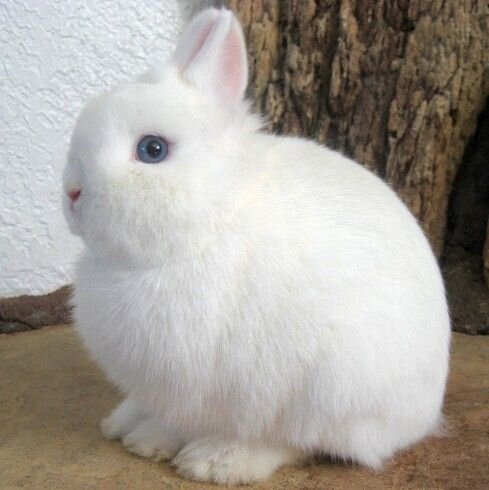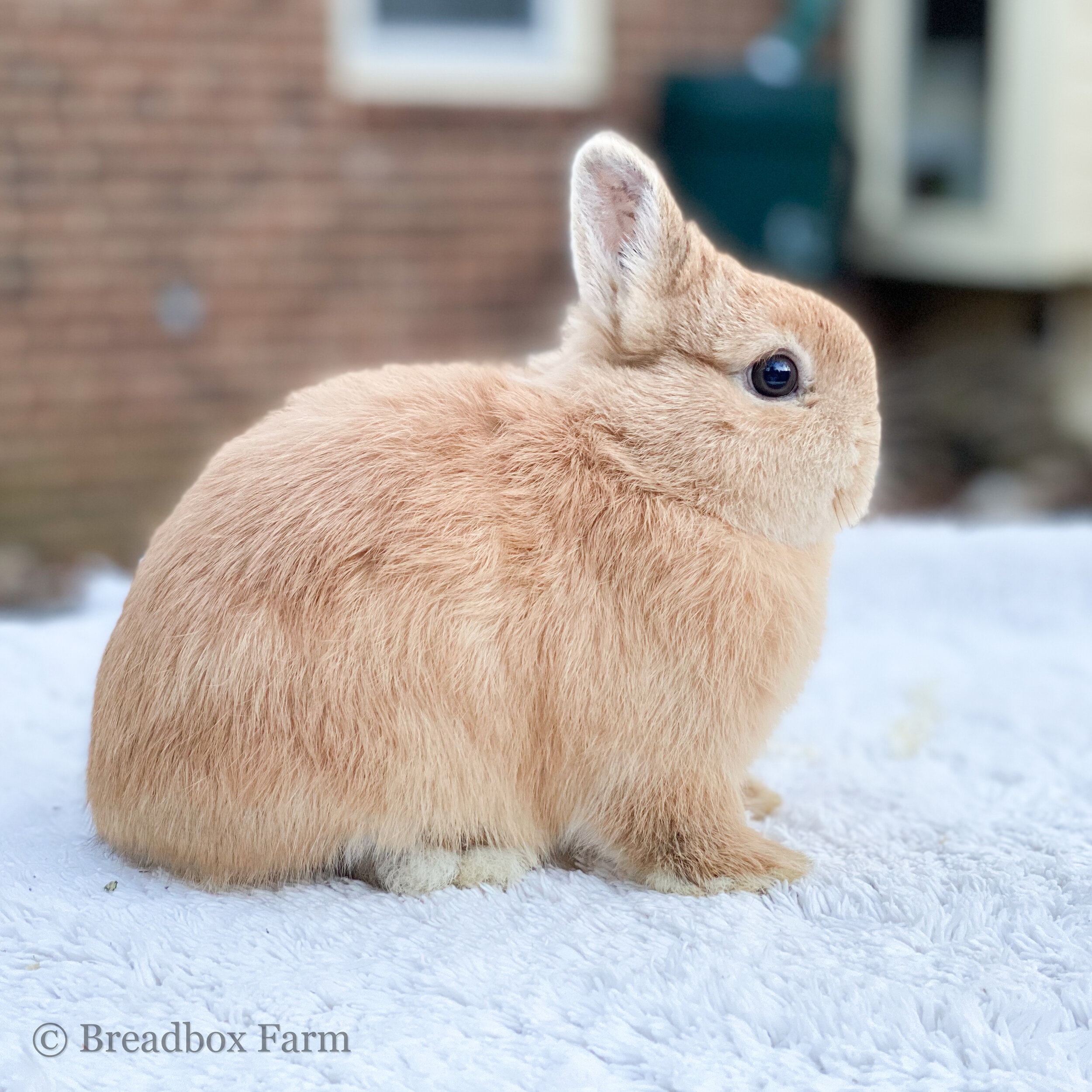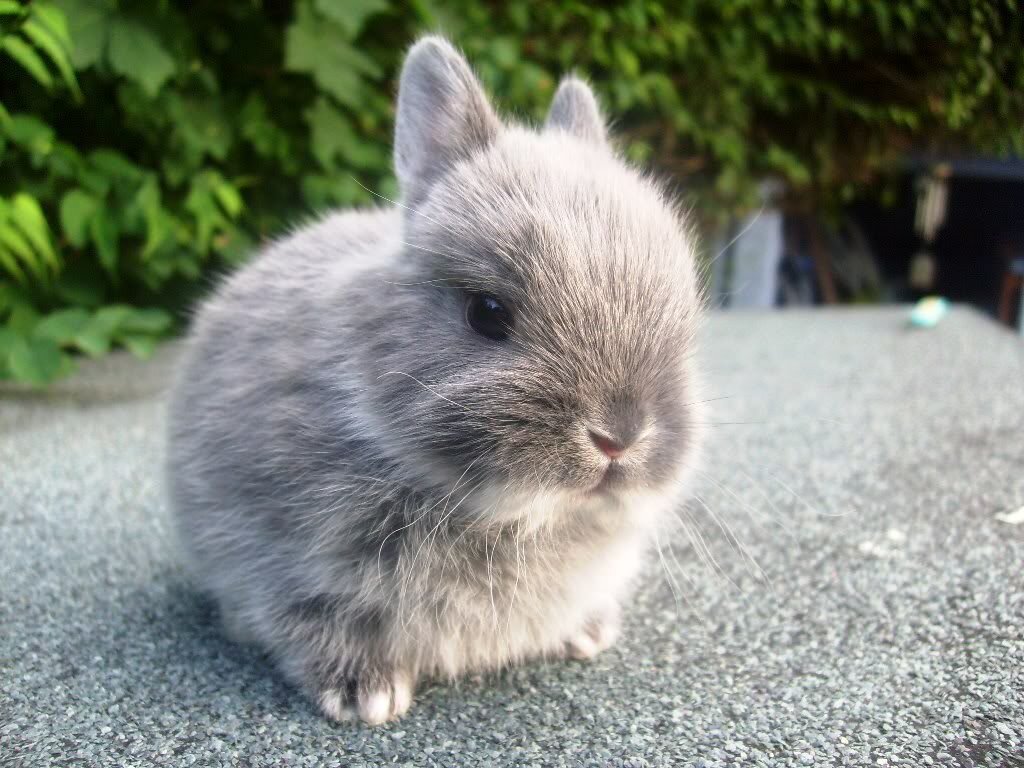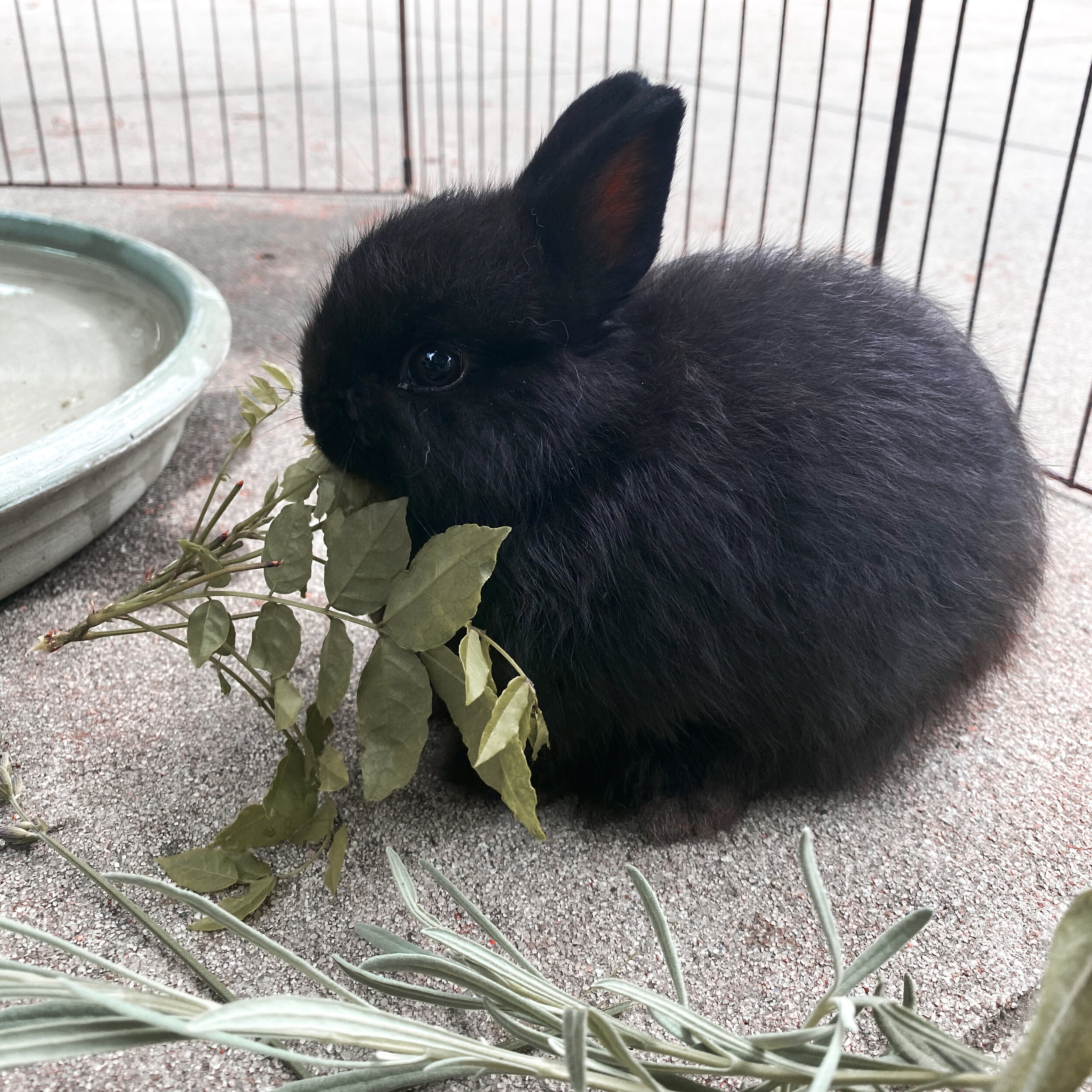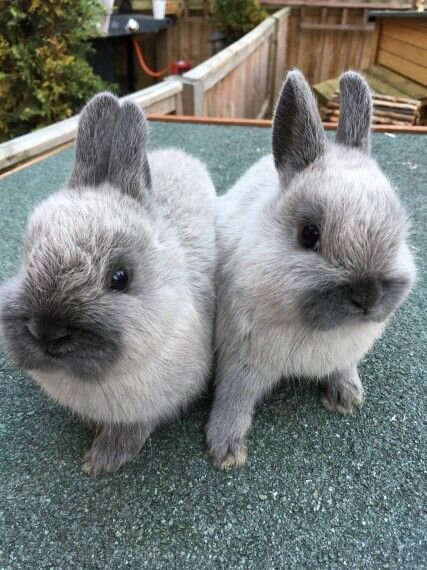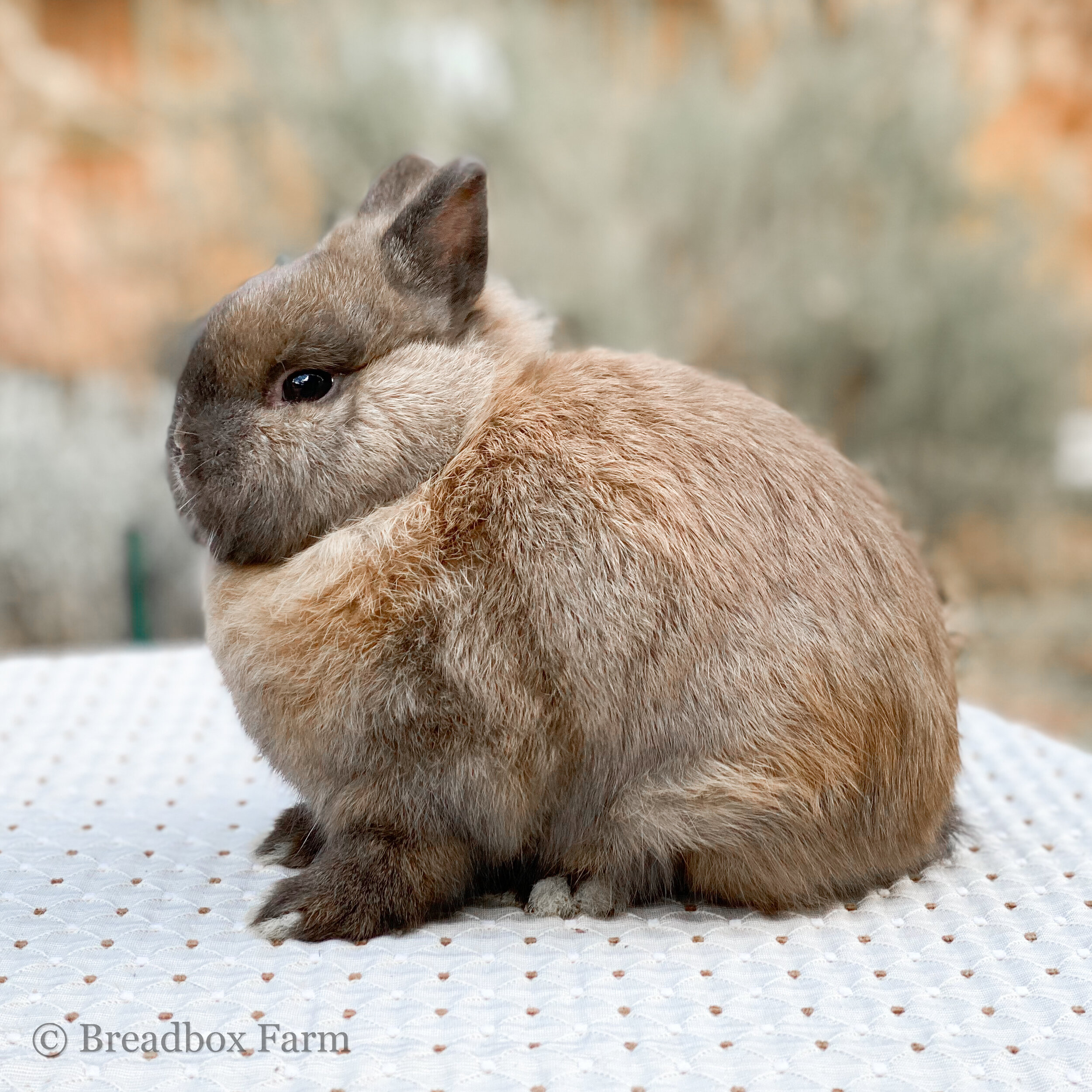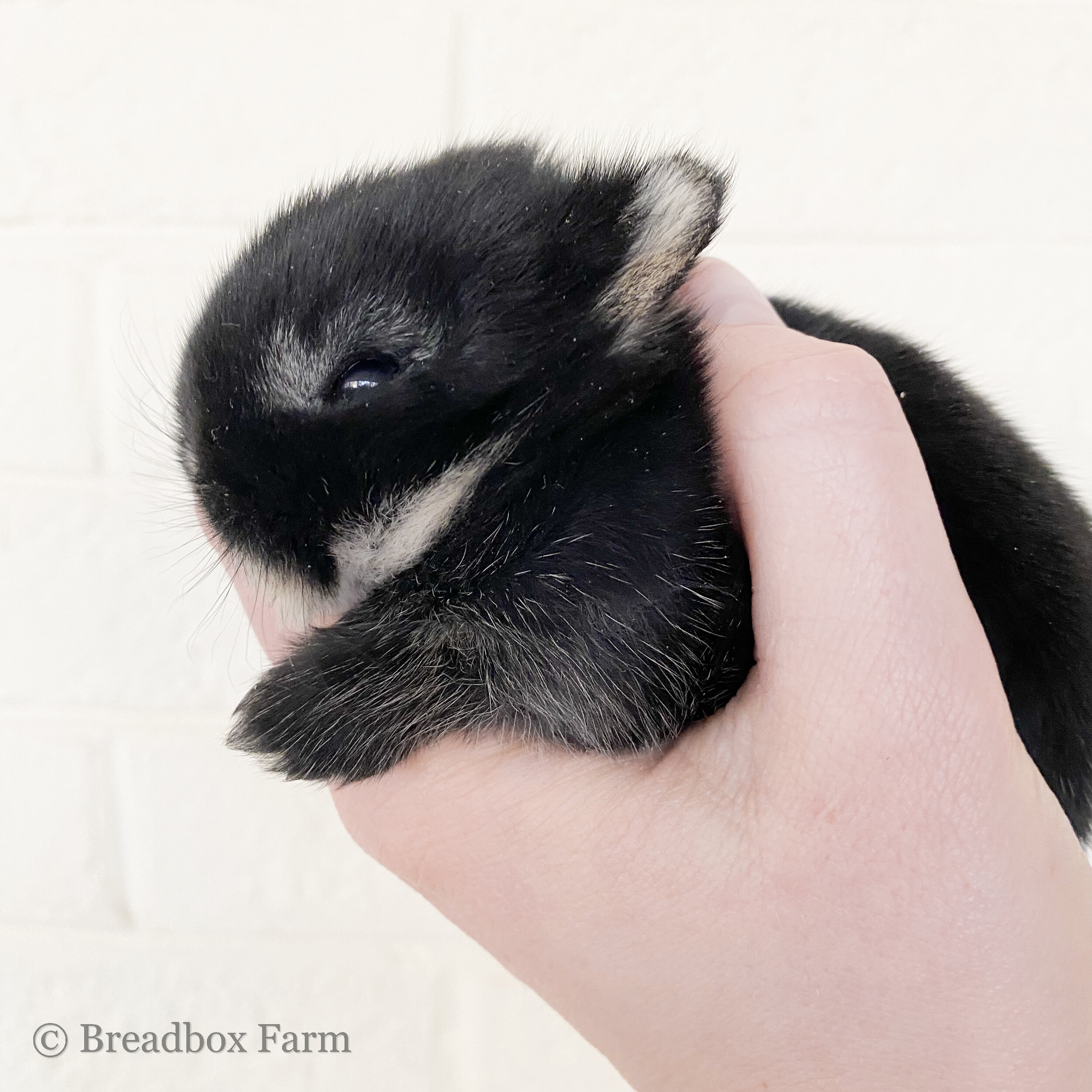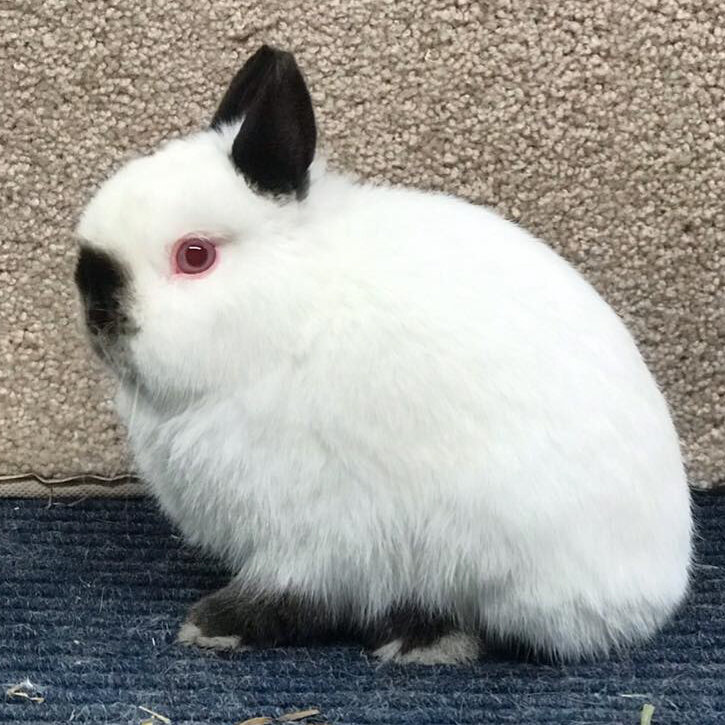Everything Netherland Dwarf
I might be slightly biased, but I think that Nethies are the absolute cutest pets in the world. That being said, my love extends to all rabbit breeds, and many other pets as well, but this article is about our specialty at Breadbox Rabbitry, the Netherland Dwarf rabbit.
Netherlands are one of the smallest breeds of rabbit weighing in at around 1.5-2.5 pounds. They have a distinctive compact appearance with a stocky body, short legs, a chubby round head, a shallow snout and wide face, large eyes, and tiny upright, rounded ears. These features are due to them being a “true” dwarf breed, in that they carry the dwarf gene. They have standard length fur and come in many colors. Even as full grown rabbits they still have youthful features and will always look like a “baby.” This has made them quite a popular breed for pet owners and fanciers alike.
Their nickname in the show circuit is “the Gem of the Fancy” and it is easy to see why. Netherlands come in 20+ color varieties that are recognized in ARBA’s Standard of Perfection. The list of recognized colors has grown throughout the years and I know a few breeders working on getting new color standards approved. It takes a massive amount of work to create a new color standard and ARBA’s approval process is not light work. My mentor, Tamie File, has been working on having a Netherland “tortoiseshell fox” coloration added to the Standard of Perfection for years. Fingers crossed for her that all the hard work will pay off!
Besides the ARBA Standard of Perfection book, the best Netherland Dwarf information (in the United States) can be found through American Netherland Dwarf Rabbit Club, or ANDRC. All new members to the club receive a comprehensive guide book to the Netherland Dwarf breed with full color photos and invaluable breeding tips. They also publish a quarterly magazine called Dwarf Digest which includes news and education for Netherland Dwarf breeders. I would strongly suggest joining the club to anyone who has been considering breeding.
The Netherland Dwarf personality is generally quirky and active but every rabbit is different, just as with other pets and humans. I’ve heard it said that boy rabbits have “better” personalities because they are generally more outgoing and relaxed, but I have seen many sweet girls too. The disposition is really unique to each rabbit. Exposing them to many activities as young rabbits gives them a more easy going attitude. Both nature and nurture are important in raising pets with a fantastic temperament. It’s normal for a rabbit to be shy when first going to a new environment, but they are social creatures and will quickly start to form a bond with you. We have some rabbits that are very active and constantly entertaining my family with acrobatic shows, and others that are lazy and mild. They prefer to snuggle up in bunny beds with friends or cuddle with us on the couch. I love that they are all different, getting to know them is half the fun.
According to Bob D. Whitman’s book “Domestic Rabbits & Their Histories,” the Netherland Dwarf breed has its roots in the Polish and Hermelin rabbit breeds and was first produced in the Netherlands in the early 20th century. They were first imported into the United Kingdom in 1948 and brought to United States during the 60’s and 70’s. The breed was accepted by the American Rabbit Breeders Association in 1969 using a modification of the British standard. The current ARBA Standard of Perfection has evolved from this original document.
The gene (symbol Dw) responsible for the common appearance of the dwarf was discovered in the United States during the beginning of the 20th century. When two "true dwarfs" (both buck and doe) are bred, the genetic pattern which makes them "true dwarfs" (Dwdw) ensures that 25 percentage of their offspring will inherit the lethal genetic combination dwdw. These offspring, often called "peanuts" by rabbit breeders, are destined to struggle with life for up to three weeks and then to die. Reasons behind the death are unknown, but it is believed that peanuts have underdeveloped digestive tracts. The condition is 100% fatal, although if fed by hand every hour and kept warm it is possible for a peanut to survive, even though it will be handicapped for its entire life. Many ethical breeders humanely euthanize peanuts upon finding them soon after birth. Peanuts are easily distinguished from non-peanuts; they have extremely pinched hindquarters, a bulbous head and their ears are often set further back than normal (sometimes almost onto the neck).
If two true dwarfs are bred, the statistical result will be 25% fatal, 25% false, and 50% true. The actual numbers of true/false/peanuts in a real litter varies. "False Dwarfs" tend to have longer bodies, longer/larger ears, longer faces, and are mostly heavier than the 2.5 pound maximum weight for showing. While false dwarfs (referred to as BUD's by breeders, BUD meaning big ugly doe) do not make good show rabbits, BUDs from a good background are vital to a breeder's program. They have the same "good genes" as a true dwarf and are capable mothers, possibly even having larger and more successful litters than true dwarfs. Also, False Dwarfs are unable to produce peanuts. Their litters will be 50% false dwarfs and 50% true dwarfs if they are bred to a true dwarf buck. False dwarfs are easily judged for quality as the traits are generally the same, only bigger. Ear thickness/shape, fullness of hindquarter, topline and other traits are the same.
It is common practice among Netherland Dwarf breeders to breed a proven show quality true dwarf buck to a quality false dwarf doe. This eliminates the chance of peanuts and yields quality offspring. The chances of false dwarfs is higher, but some of the false dwarf does may go toward a breeding program and the rest are sold as pets.
Netherland Dwarf needs are very similar to all the other rabbit breeds. They need a safe space to live, clean water, and good quality food; including hay, greens, veggies, and pellets. To read more about nutrition, check out this article. Rabbits are social animals and need companionship to live a happy, healthy life. This need can be met by another rabbit, their human caretaker, or sometimes even another species of animal. They also require a bit of space to run and jump, granted this may be much less than needed for larger breeds because of their small size. It’s important that they are able to exercise for a few hours a day.
Overall, Netherland Dwarf rabbits are beautiful animals with fun personalities. My goal is to share the joy my rabbits have brought me with others. As if their cute little ears and big eyes weren’t enough to win you over!
Are you looking to add a Netherland Dwarf to your family? Visit our Education page to read more about keeping Netherlands as pets. If you are a breeder, or are thinking about getting started breeding Netherlands, check out our Breeding page for resources.


